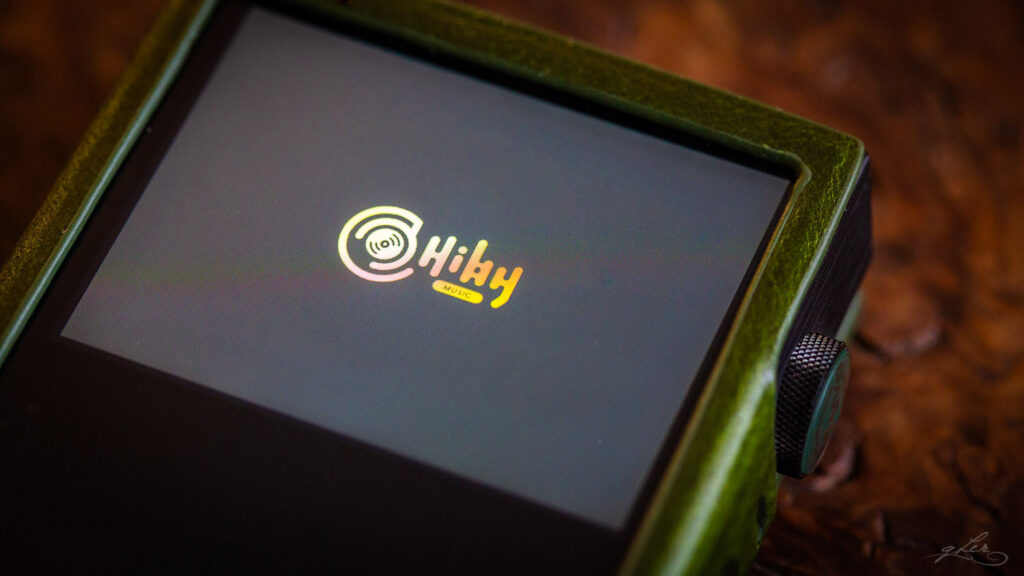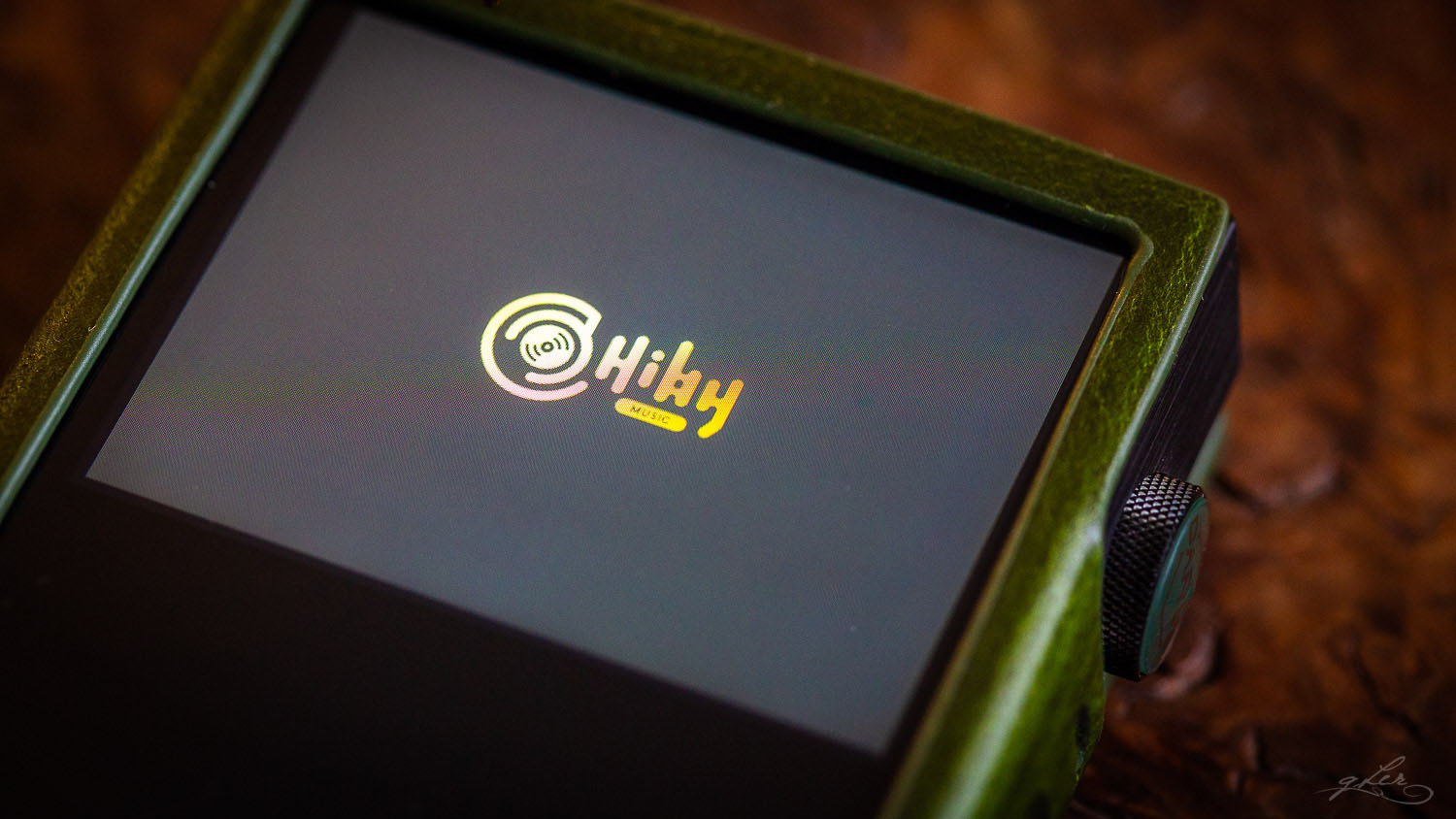Unboxing and package contents
For a dwarfish DAP, RS2 is shipped in a rather large and impressive green-and-gold themed square box. A groove along the middle of the box makes it easy to lift the lid, revealing the player inside a sturdy foam cutout. The DAP comes with two pre-installed screen protectors, with tabs to remove them – a very convenient detail that’s too often missed by other DAP makers.
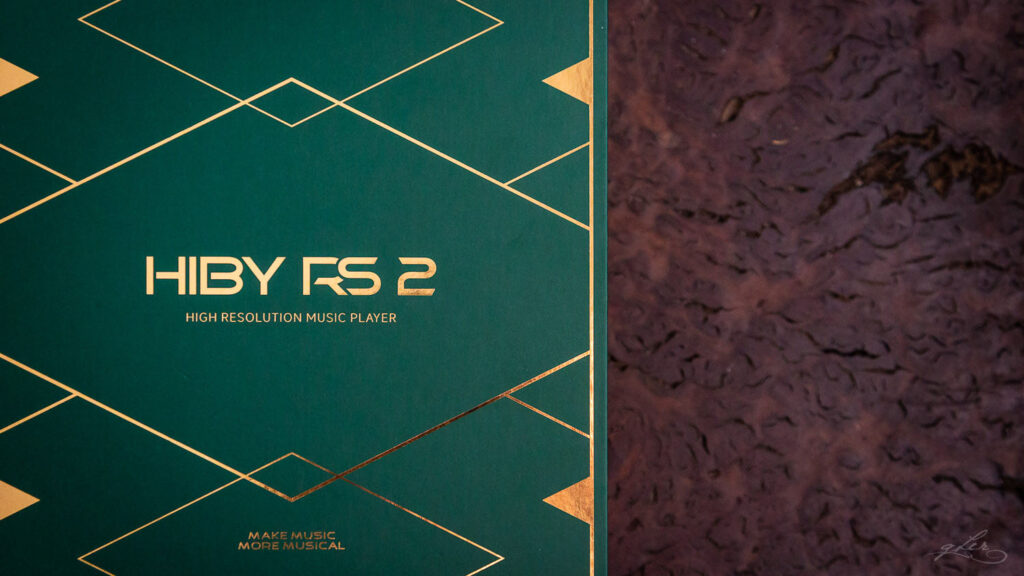
Lifting the foam cutout reveals another storage layer at the bottom of the box, with three additional carboard containers. In the first, HiBy includes a custom green pleather case that fits snugly over the player, with cutouts for the screen, ports, and LED light. The other two contain separate cables: USB-C to A for connecting the RS2 to a laptop or desktop computer, and HiBy’s proprietary USB-C to coax, for connecting to the digital input of an external DAC.
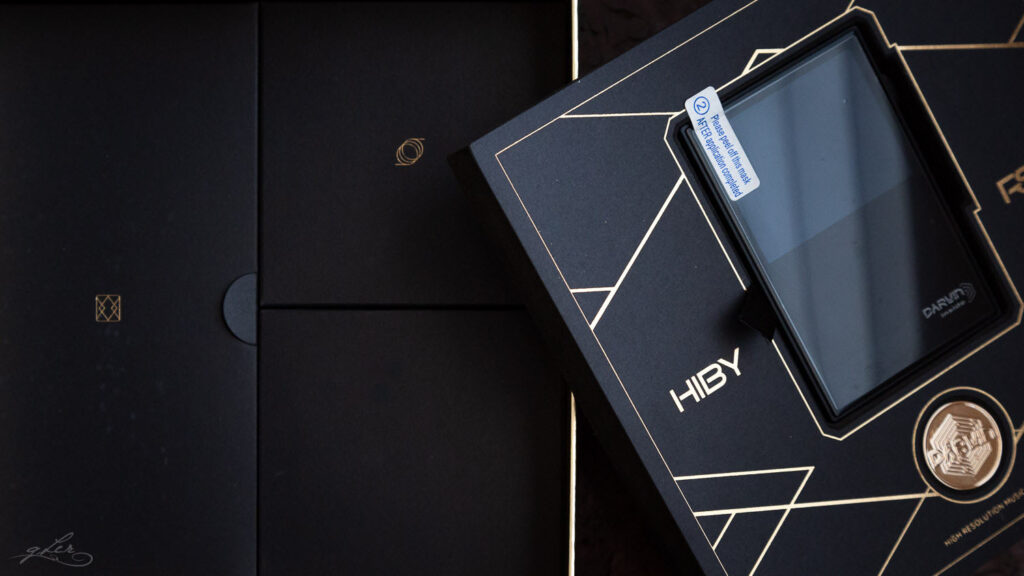
The one cable missing is a USB-C to C (or Lightning, for iPhone users), which would make it easier to connect direct to a phone or tablet, or a USB-A to C/Lightning adapter to make that happen with the existing cable. The included accessories are already generous for the asking price, and the build quality of the cables is excellent, but it’s a missed opportunity not to include all the cables or adapters one would need to use the DAP as a phone dongle straight away.
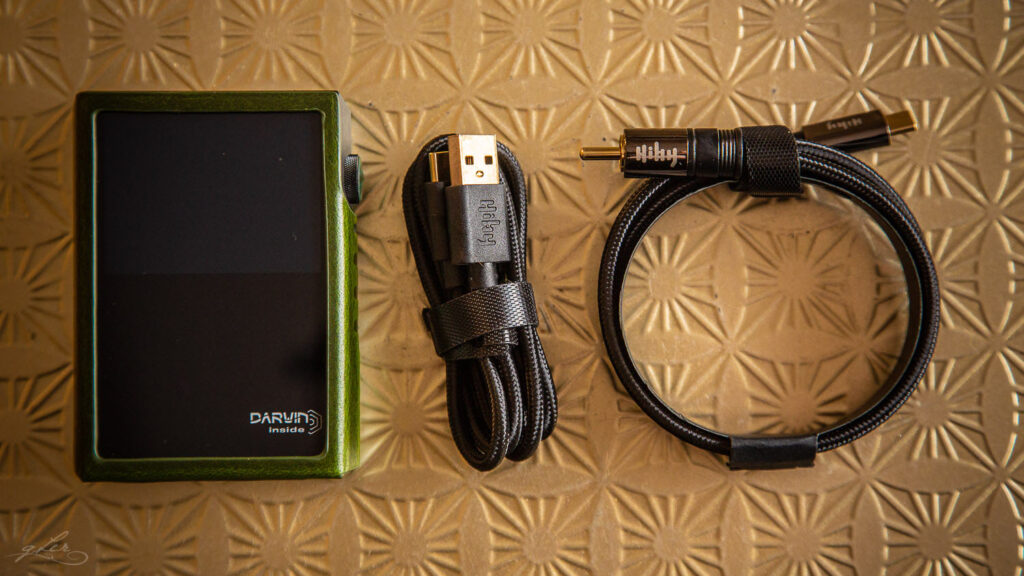
An interesting curio rounds off the package: a gold-painted Darwin logo brooch. While it doesn’t serve any special function, the brooch does give the unboxing a touch of class, reinforcing that the RS2 is more than just a run-of-the mill player, but rather something a bit special. It’s not much, but first impressions count.
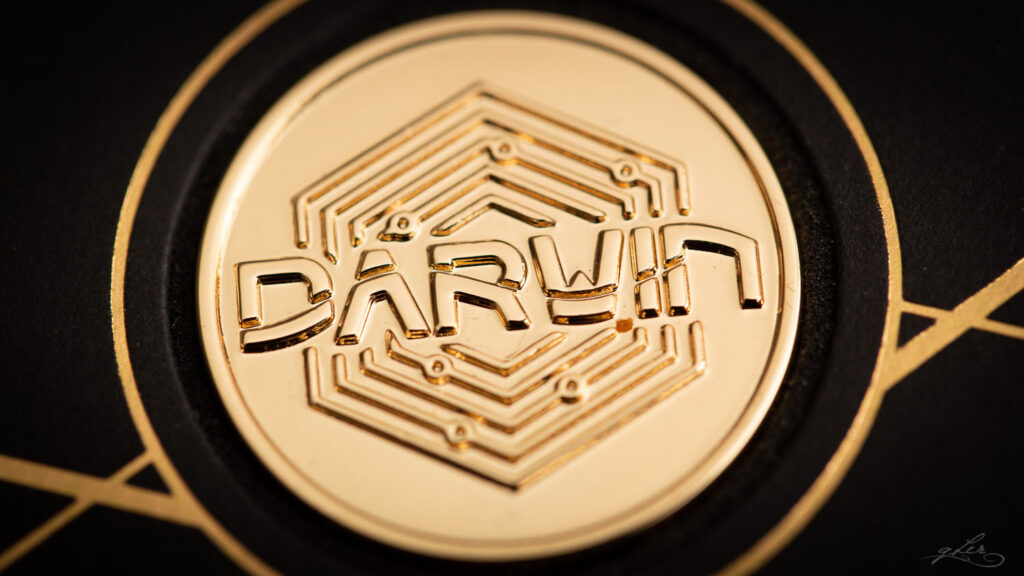
Design and details
If you’ve used any of HiBy’s recent DAPs – R6, R8, R5 Gen 2, or RS6 – you’ll be familiar with the angled, ‘muscular’ design of their players. RS2 carries the theme forward, with a few twists.
For starters, when I say the RS2 is small, I mean it’s really small, measuring 9cm by 6.5cm, with a slightly chunky 1.8cm girth. The body is made of a black-copper brushed aluminium alloy, with front and rear glass plates. The player weighs in at 158g, light enough for an easy everyday carry.
The volume wheel of the larger R-series players is now on the side, and the wheel itself features an angled diamond-cut faceplate with a deep green inlay and gold ‘Darwin’ logo. Turning the wheel feels smooth and natural, with faint clicks as it turns to change the volume up or down. Unlike its Android siblings, there’s no onscreen volume control.

Also different from the Android players, the headphone ports are now on top. There are three ports in total: 4.4mm balanced, 3.5mm single-ended, and 3.5mm line out. RS2 doesn’t seem to include a balanced line out, which is a shame if you wanted to use an external balanced amp, although you can still use it as a digital source through the USB port.
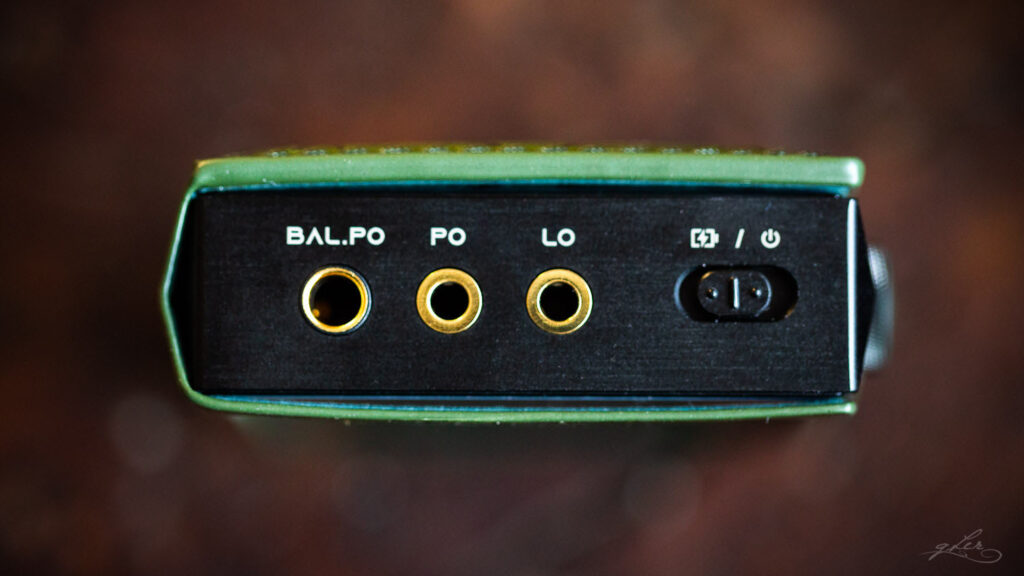
Speaking of which, the USB-C port is at the bottom of the player, flanked by two (that’s right, two) microSD card slots. There’s no internal storage available, but having two card slots is a bonus for anyone wanting to swap between multiple cards, with up to 4TB theoretically available using two 2TB cards.
The three functional pushbuttons – play/pause, forward and back – are on the right side of the player, beneath the wheel, as is a slit-like LED that indicates bitrate and charging status. Like the rest of the player, the buttons feel firm, stable, and easy to push. When using the case, the buttons are hidden (or rather, protected), with indents in the case material allowing you to feel for the buttons for one-handed operation.
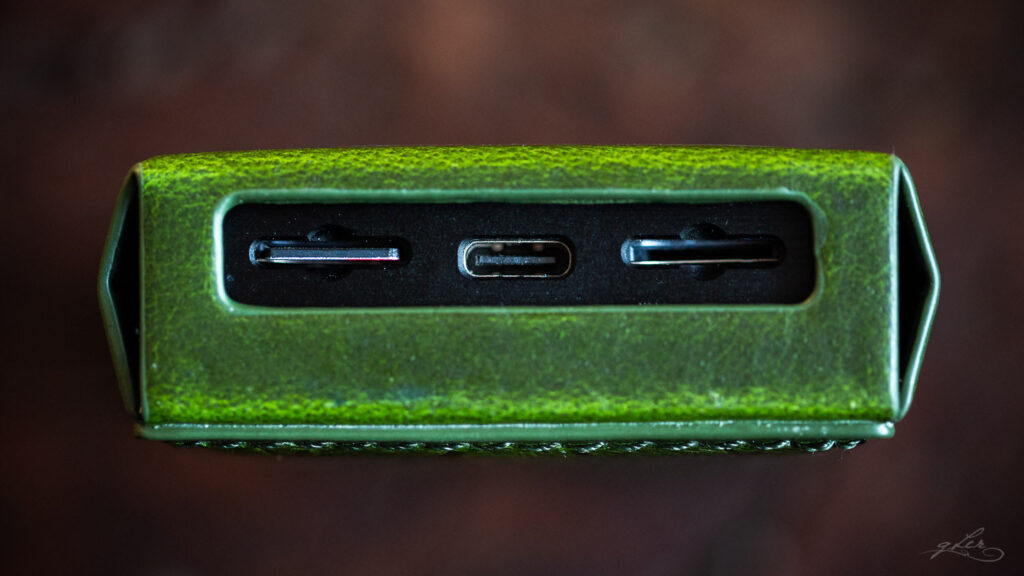
Last but not least, the screen. The screen is my only major gripe with the RS2 design: it’s simply too small. Instead of using the full dimensions of the front panel, like most modern players, the screen display is squashed into the top half, making it awkward to navigate through already-shrunk menus options, file names and album covers. Fair enough, the screen has decent resolution and brightness, and is touch-enabled (including tap-to-wake), but it would have been far more effective as a full-size screen.
Overall, RS2 is very well built, with a light, comfortable frame that’s easy to use one-handed, in-pocket and on the go. The smaller screen does have the benefit of being discrete, and won’t use up too much battery power. Along with the case and default green/gold UI theme, the player has classic, almost retro-luxury feel about it, harking back to early DAP designs but with much more going on under the hood.
